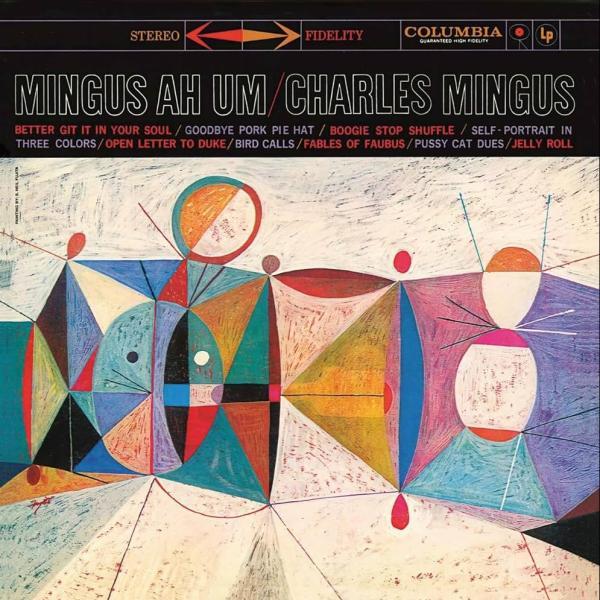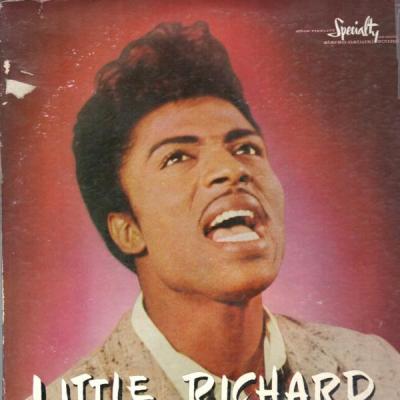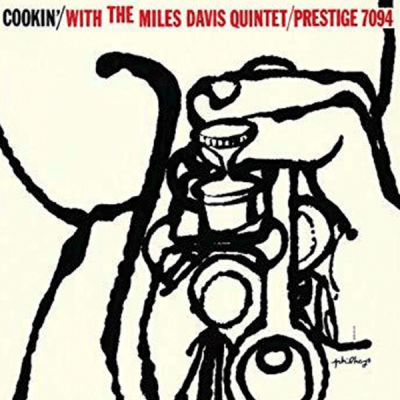


Charles Mingus: Mingus Ah Um
Album #31 - October 1959
Episode date - January 10, 2024
Charles Mingus was a unique character, even in the eclectic world of jazz where virtually every well-known performer had distinctive characteristics. Of mixed heritage, including African-American, Chinese, Native American and German descent, he confronted racism from all directions, which made him sensitive and occasionally confrontational to any perceived slight.
Early in his career, he earned a spot playing bass for Duke Ellington’s Orchestra, Louis Armstrong, Lionel Hampton and Charlie Parker but his abrasive personality often made those associations short-lived, and partially explains how he became a bandleader. It’s somewhat unusual for a jazz bassist to be a leader and primary songwriter, but for Mingus, that role was somewhat inevitable. His intense opinions and strong-willed personality made him a perfect candidate to unify players around him, especially when he started to accrue a number of remarkable compositions.
His style of writing took pieces from the formal Ellington/Strayhorn method, but he loosened things up to allow his players to improvise as a unit. It was an almost schizophrenic approach to creativity, but it launched him toward discovering a segment of jazz that had been virtually untouched by anybody before him. His organization became known as The Jazz Workshop and it operated as a sort of finishing school for young players, where Mingus would exhort them, often verbally, to seek out unique ground.
‘Pithecanthropus Erectus’ and ‘The Clown’ were among his earliest albums of original material and they set the pace for all that followed. Both are strange, fascinating albums full of idiosyncratic ideas that all but demanded his players to think for themselves, which meant that they occasionally waded into deeper water. Both albums can be simultaneously alluring and disconcerting, but Mingus’ true genius blossomed on “Mingus Ah Um.” Of all the contradictory things that Mingus attempted to balance simultaneously, his biggest success may have been remaining true to the roots of jazz music while also exploring uncharted territory. This album nearly explodes with innovation, even while it celebrates traditional musical forms such as gospel (“Better Git It in Your Soul”), the blues (“Boogie Stop Shuffle”) and more specifically, a tribute to Jelly Roll Morton (“Jelly Roll”) and the stylizations of Duke Ellington (“Open Letter to Duke”). Mingus is one of the very few musicians who Ellington personally fired from his band, but apparently no bad blood lingered between the two, based on the ingenious (read complimentary) twists and turns of Mingus’ composition, as well as the fact that soon after this album’s release, they would collaborate on “The Money Jungle” with Max Roach.
Since the CD era, “Mingus Ah Um” has been available for quite a while in extended format, with most songs featuring a few extra minutes of music that was previously edited to fit on one LP, plus a few bonus tracks. While the updated version is fascinating and probably closer to the original intent of the artist, I must admit that I prefer the original edited version. Producer Teo Macero had an uncanny ear for assembling loose work into tightly structured assemblages (he is virtually responsible for editing and arranging “In a Silent Way” and “Bitches’ Brew” for Miles Davis), so his judicious cuts and splices help to keep the material concise and focused without distracting the listener. If you appreciate Mingus, you may enjoy comparing the two versions to hear the differences, but either way, you can’t go wrong.
Featured Tracks:
Better Git It in Your Soul
Goodbye Pork Pie Hat
Boogie Stop Shuffle
Self-Portrait in Three Colors
Open Letter to Duke
Bird Calls
Fables of Faubus
Pussy Cat Dues
Jelly Roll
October 1959 – Billboard Did Not Chart
Related Shows













